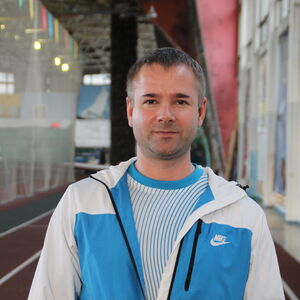Диссертация (1136895), страница 34
Текст из файла (страница 34)
2000. 16(1). P. 13–21.89. Borlescu A.M. Being a homeopath. Learning and practice in a homeopathiccommunity // Journal of Comparative Research in Anthropology and Sociology.2011. Vol. 2(2). P. 11–31.90. Brante T. Sociological approaches to the professions // Acta Sociologica.
1988.Vol. 31(2). P. 119–142.91. Braverman H. Labour and Monopoly Capital: the Degradation of Work in theTwentieth Century / Н. Braverman // New York: Monthly Review Press, 1974.92. Brien S., Dibb B., Burch A. The use of intuition in homeopathic clinical decisionmaking: an interpretative phenomenological study // Evidence-Based Complementaryand Alternative Medicine. 2011. P. 1–8.93. Brodin Danell J.-A., Danell R. Publication activity in complementary andalternative medicine // Scientometrics.
1988. Vol. 80(2). P. 539–551.94. Brown J.V., Rusinova N.L. “Curing and Crippling”: Biomedical and AlternativeHealing in Post-Soviet Russia // Annals of the American Academy of Political andSocial Science, Vol. 583, Global Perspectives on Complementary and AlternativeMedicine. 2002.
P. 160–172.95. Cant S., Sharma U. Demarcation and transformation within homoeopathicknowledge. A strategy of professionalization // Social Science & Medicine. 1996.Vol. 42(4). P. 579–588.96. Cant S., Sharma U. Reflexivity, ethnography and the professions (complementarymedicine). Watching you watching me watching you (and writing about both of us) //The Editorial Board of The Sociological Review. 1998. P. 244–263.19397.
Cant S., Sharma U. Reluctant Profession // Work, Employment & Society. 1995Vol. 9(4). P. 743–762. Clarke D.B., Doel M.A., Segrott J. No alternative? Theregulation and professionalization of complementary and alternative medicine in theUnited Kingdom // Health & Place. 2004. No. 10. P. 329–338.98. Castells M. Informationalism, Networks, and the Network Society: A TheoreticalBlueprint / Manuel Castells (ed.) The Network Society: A Cross-CulturalPerspective.
Northampton, MA: Edward Elgar. 2004.99. Coburn D. Canadian Medicine: Dominance or Proletarianization? // The MilbankQuarterly, Vol. 66, Supplement 2: The Changing Character of the MedicalProfession.1988. P. 92–116.100. Coburn D. State authority, medical dominance and trends in the regulation of thehealth professions: the Ontario case // Soc. Sci. Med. 1993. Vol. 37(2). P. 129–138.101. Coburn D. Professionalization and Proletarianization: Medicine, Nursing,and Chiropractic in Historical Perspective // Labor/Le Travail.
Fall 1994. Vol. 34.P. 139–162.102. Coburn D., Rappolt S., Bourgeault I. Decline vs. retention of medical powerthrough restratification: an examination of the Ontario case // Sociology of Health &Illness. 1997. Vol. 19(1). P. 1–22.103. Complementary and alternative medicine // ed. by S.B. Kayne. Second edition.London: Pharmaceutical Press, 2009.103. Coulter I., Willis E. Explaining the Growth of Complementary and AlternativeMedicine // Health Sociology Review.
2007. Vol. 16. P. 214–225.104. Cupara S. Homeopathy today – education and status // Acta Medica Medianae2007. Vol. 46. P. 30–35.194105. ThecurrentregulatorystatusofhomeopathicmedicineinEurope[Электронный ресурс] // European Committee for Homeopathy. Режим доступа:http://www.homeopathyeurope.org/regulatory-status (дата обращения: 07.08.2012).106. Degele N. On the Margins of Everything: Doing, Performing, and StagingScience in Homeopathy // Science Technology Human Values. 2005.
Vol. 30(1).P. 111–136.107. Dingwall R. Profession and Social Order in a Global Society // InternationalReview of Sociology – Revue Internationale de Sociology, Vol. 9(1). 1999. P. 131–140.108. Dole C. In the Shadows of Medicine and Modernity: Medical Integration andSecular Histories of Religious Healing in Turkey // Culture, Medicine & Psychiatry.2004. Vol. 28(3). P. 255–280.109. Eastwood H.
Why are Australian GPs using alternative medicine?:Postmodernisation, consumerism and the shift towards holistic health // Journal ofSociology. 2000. Vol. 36(2). P. 133–156.110. Elston М.А. The politics of professional power: medicine in a changing healthservice // Gabe, J., Calnan, M., Bury, M.
The Sociology of the Health Service.L.: Routledge, 1991. P. 58–88.111. EngelG.V.Professionalautonomyandbureaucraticorganization//Administrative Science Quarterly. March 1970. Vol. 15(1). P. 12–21.112. Esping-Andersen G. The three worlds of welfare capitalism. London: Polity.1990.113. Evetts J. A new professionalism? Challenges and opportunities // CurrentSociology Monograph 2.
2011. Vol. 59(4). P. 406–422.114. Evetts J. The management of professionalism: a contemporary paradox /Changing teacher roles identities and professionalism. Kings College, London. 2005.P. 1–17.195115. Evetts J. The sociological analysis of professionalism: occupational change inthe modern world // International Sociology. June 2003. Vol. 18(2): 395–415.116. Field M.G. Structured Strain in the Role of the Soviet Physician // AmericanJournal of Sociology. 1953.
Vol. 58(5). P. 493–502.117. Flexner A. Is social work a profession? // In National Conference of Charitiesand Corrections, Proceedings of the National Conference of Charities and Correctionsat the Forty-second annual session held in Baltimore, Maryland. 1915. Chicago:Hildmann.118. Frank R. Integrating homeopathy and biomedicine: medical practice andknowledge production among German homeopathic physicians // Sociology of Health& Illness. 2002. Vol. 24(6).
P. 796–819.119. Frank R.,Ecks S.TowardsanethnographyofIndianhomeopathy//Antropology & Medicine. December 2004. Vol. 11(3). P. 307–326.120. Freidson E. Profession of Medicine. N.Y.: Dodd, Mead & Co, 1970.121. Freidson E. The Reorganization by Regulation of the Professions // Law andHuman Behavior. September 1983. Vol. 7(2/3).122. Freidson E. The Changing Nature of Professional Control // Annual Review ofSociology.
1984. Vol. 10. P. 1–20.123. Freidson E. Professionalism: The Third Logic. Chicago: University of ChicagoPress, 2001.124. Fries Ch. J. Bourdieu’s Reflexive Sociology as a Theoretical Basis for MixedMethods Research: An Application to Complementary and Alternative Medicine //Journal of Mixed Methods Research. 2009. Vol. 3(4). P. 326–348.125. Goldstein M. The Emerging Socioeconomic and Political Support forAlternative Medicine in USA // The ANNALS of the American Academy of Politicaland Social Science.
2002. Vol. 583. P. 44–63.196126. Greenwood, E. Attributes of a Profession // ed. by M. Zald. Social WelfareInstitutions. London: Wiley, 1965. P. 509–523.127. Goode W. Community within a community: the professions // SociologicalPerspectives on Occupations. Illinois: F.E. Peacock Publishers, 1972.128. Hall R.
Professionalization and Bureaucratization // American SociologicalReview. 1968. Vol. 33. No. 1. P. 92-104.129. Harrison S., Dowswell G. Autonomy and bureaucratic accountability inprimary care: what English general practitioners say // Sociology of Health & Illness.2002. Vol. 24(2). P. 208–226.130. Harvey D. The Condition of Postmodernity.
An Enquiry into the Origins ofCultural Change, Cambridge, MA: Basil Blackwell, 1989.131. Haug M.R., Sussman M.B., Professional Autonomy and the Revolt ofthe Client // Social Problems. 1969. Vol. 17(2). P. 153–161.132. Haug M.R. The Erosion of Professional Authority: A Cross-Cultural Inquiry inthe Case of the Physician // The Milbank Memorial Fund Quarterly. Health andSociety. 1976. Vol. 54(1). P. 83–106.133. Health and medicine.
Medical equipment. Russia [Электронный ресурс] //EasyLinkBusinessServices.2012.Режимhttp://www.easylink.cz/newsletter/EasyLink-MedicalMarketRussia-RU.pdfдоступа:(датаобращения: 04.07.2012).134. Hess D. Medical modernisation, scientific research fields and the epistemicpolitics of health social movements // Sociology of Health & Illness.2004. Vol. 26(6).P. 695–709.135.
Hess D. Science and Technology in a Multicultural World. New York:Columbia University Press. 1995.197136. Hess D. Science in the New Age – the Paranormal, Its defenders andDebunkers, and American Culture. Madison: The University of Wisconsin Press.1993.137. Hollenberg, D. Uncharted ground: Patterns of professional interaction amongcomplementary/alternative and biomedical practitioners in integrative health caresettings // Social Science and Medicine. 2006. Vol. 62(3). P. 731–744.138. Hollenberg D., Muzzin L.
Epistemological challenges to integrative medicine:An anti-colonial perspective on the combination of complementary/alternativemedicine with biomedicine // Health Sociology Review. 2010. Vol. 19(1). P. 34–56.139. Homeopathic and Anthroposophic Medicine in Europe. Facts and figures[Электронный ресурс] // European coalition on homeopathic and anthroposophicmedicinalproducts(ECHAMP),2007.Режимдоступа:http://www.echamp.eu/fileadmin/user_upload/Brochures/ECHAMP-FlyerF_F-4p.pdf(дата обращения: 20.05.2012).140.
Iarskaia-Smirnova E., Romanov P. “A salary is not important here…”Professionalization of Social Work in Contemporary Russia // Social Policy andAdministration, 36(2). 2002. P. 123–141.141. Iarskaia-Smirnova E., Romanov P. Culture matter: integration of folk medicineinto healthcare in Russia // Rethinking professional governance.
Internationaldirections in healthcare / Edited by E. Kuhlmann, M. Saks. Bodmin.: MPG Books,2008. P. 141–154.142. Illich I. Medical Nemesis: the Expropriation of Health, London: Calder andBoyars. 1975.143. Ingliss B., West R. The alternative health guide. London: Michael Joseph.1983.198144.
Jutte R. Alternative medicine and medico-historical semantics // Historicalaspects of unconventional medicine: approaches, concepts, case studies / Ed. by R.Jutte, M. Eklof, M.C. Nelson. Sheffield: European Association for the History ofMedicine and Health Publications. 2001. P. 11-26.145. Kelner М.J., Boon H., Wellman B., Welsh S. Complementary AlternativeGroups Contemplate the Need for Effectiveness, Safety and Cost-EffectivenessResearch // Complementary Therapies in Medicine.
2002. Vol. 10. P. 235–239.146. Kottow M.H. Classical Medicine v Alternative Medical Practices // Journal ofMedical Ethics. 1992. Vol. 18(1). P. 18–22.147. Larson M. The Rise of Professionalism: a Sociological Analysis. Berkeley,London: University of California Press, 1977.148. Lave J., Wenger E. Situated Learning: Legitimate Peripheral Participation.New York: Cambridge University Press, 1991.149. Linder S.H. Assessing Alternative Medicine: Methodological and ResearchPolicy Concerns// International Journal of Technology Assessment in Health Care.2003. Vol. 19(3). P.










